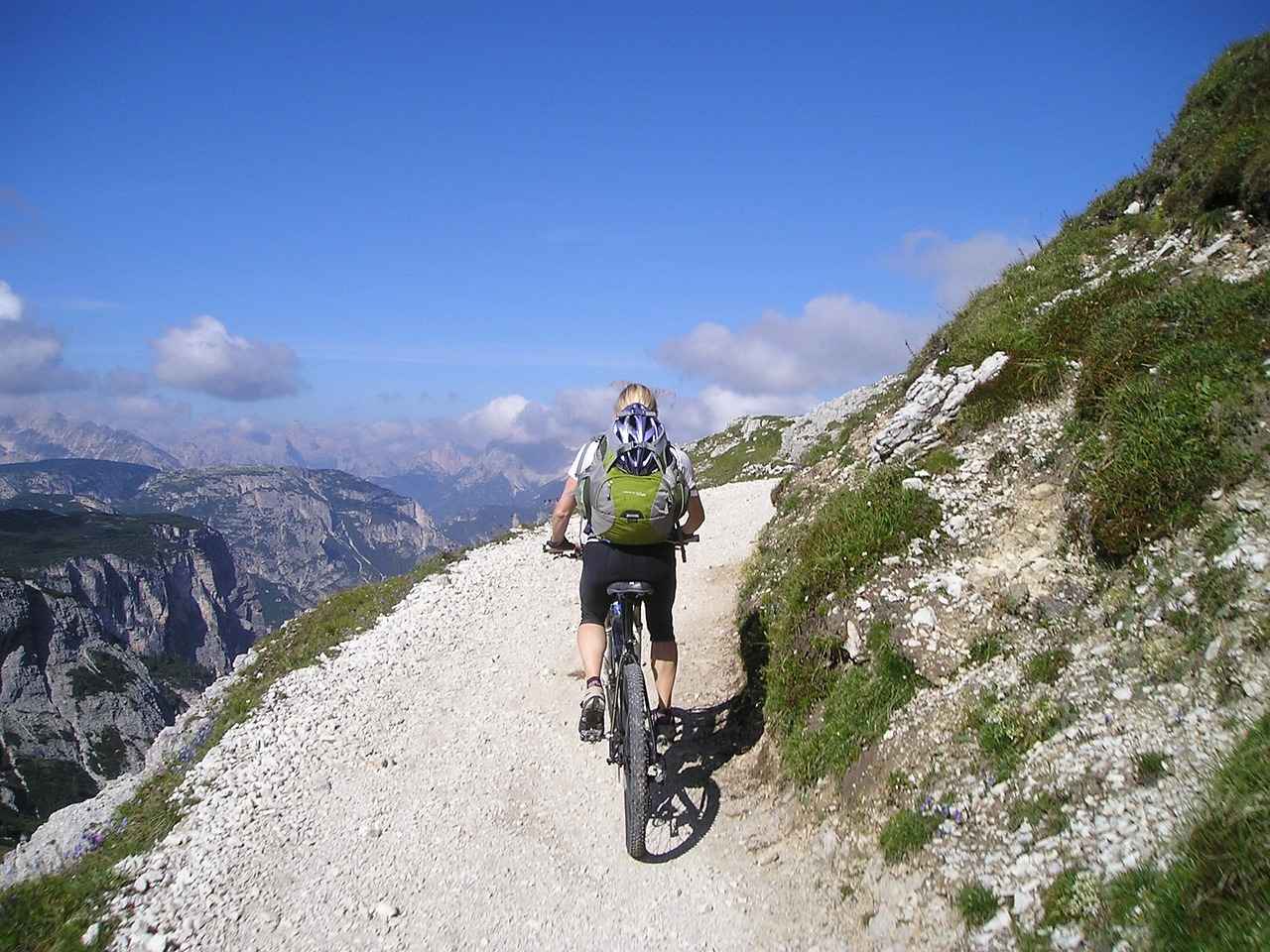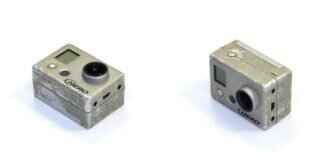For adventure seekers who love the thrill of rugged terrains, electric mountain bikes (eMTBs) provide an exciting blend of technology and outdoor exploration. This guide will delve into the top electric mountain bikes available today, highlighting essential features, benefits, and recommendations tailored for every outdoor enthusiast.
1. What Makes Electric Mountain Bikes Unique?
Electric mountain bikes combine the essence of traditional mountain biking with electric assistance. This unique feature enhances performance, allowing riders to tackle challenging trails with ease. eMTBs are equipped with powerful motors that provide additional torque, making steep climbs and long rides more manageable.
2. Key Features to Consider When Buying
- Battery Life and Range: A robust battery ensures longer rides. Look for models with at least 500Wh capacity for extensive trail adventures.
- Motor Power: Motors typically range from 250W to 750W. More power means better performance on steep inclines.
- Suspension Type: Choose between hardtail and full suspension based on your riding style and terrain preferences.
- Frame Material: Lightweight materials like aluminum or carbon fiber enhance maneuverability and comfort.
3. Popular Brands in the Electric Mountain Bike Market
| Brand | Notable Models | Strengths |
|---|---|---|
| Trek | Powerfly Series | Balanced performance and comfort |
| Specialized | Turbo Levo | Innovative technology and design |
| Giant | Trance E+ Series | Excellent value for performance |
4. Pricing: What to Expect
Electric mountain bikes range significantly in price, from budget-friendly options around $1,500 to high-end models exceeding $10,000. Consider your budget while prioritizing essential features that enhance your riding experience.
5. Conclusion: Choosing the Right Electric Mountain Bike for You
Selecting the perfect electric mountain bike involves understanding your riding style, preferred terrains, and budget. By considering the features discussed, you can make an informed decision that will enhance your outdoor adventures.

1. What Makes Electric Mountain Bikes Unique?
Electric mountain bikes (eMTBs) are revolutionizing the way outdoor enthusiasts experience the thrill of mountain biking. By integrating electric assistance with traditional mountain biking, eMTBs offer a unique blend of performance and enjoyment, especially on challenging trails. This article delves into the distinctive features that set eMTBs apart from standard mountain bikes.
One of the most significant aspects of eMTBs is their electric motor, which provides an extra boost to riders, making it easier to conquer steep hills and rugged terrains. This feature allows even novice riders to tackle trails that might have been daunting without assistance. Additionally, eMTBs often come equipped with advanced suspension systems that enhance comfort and control, allowing for a smoother ride over rough surfaces.
Another unique characteristic of eMTBs is their battery capacity. These bikes are designed with powerful lithium-ion batteries that can support long rides without frequent recharging. The range of an eMTB can significantly vary based on the model and riding conditions, but many can cover 30 to 60 miles on a single charge, making them suitable for extended adventures.
Moreover, eMTBs are built with durability in mind. The frames are often constructed from high-quality materials such as aluminum or carbon fiber, ensuring they can withstand the rigors of off-road biking while remaining lightweight. This combination of strength and lightness is crucial for maintaining agility on challenging trails.
In summary, electric mountain bikes offer a unique riding experience that combines the thrill of traditional mountain biking with the advantages of electric assistance. Their powerful motors, advanced suspension systems, robust battery life, and durable construction make them an excellent choice for outdoor enthusiasts looking to enhance their trail riding adventures.

2. Key Features to Consider When Buying
When selecting an electric mountain bike, it is essential to consider several key features that can greatly influence your riding experience. Each component plays a vital role in how well the bike performs on various terrains, ensuring you have the best adventure possible.
- Battery Life: A crucial factor for any eMTB, battery life determines how far you can travel on a single charge. Look for bikes with batteries that offer a range suitable for your intended rides. Ideally, a good eMTB should have a battery life that supports at least 30-50 miles on a single charge, depending on the terrain and riding style.
- Motor Power: The power of the motor directly affects your bike’s acceleration and ability to tackle steep hills. Motors typically range from 250W to 750W. A more powerful motor is beneficial for hilly terrains and off-road trails, providing a smoother and more enjoyable ride.
- Suspension Type: The type of suspension you choose can significantly impact your comfort and control. Hardtail bikes, which feature front suspension only, are lighter and more efficient on smooth trails. In contrast, full-suspension bikes absorb shocks from both the front and rear, making them ideal for rough, technical terrains.
- Frame Material: The material of the bike frame affects its weight, durability, and ride quality. Common materials include aluminum, carbon fiber, and steel. Aluminum frames are lightweight and affordable, while carbon fiber offers superior strength and reduced weight, albeit at a higher price point.
- Braking System: Effective brakes are essential for safety, especially on steep descents. Hydraulic disc brakes provide superior stopping power and modulation compared to mechanical brakes, making them a preferred choice for serious mountain bikers.
By understanding and evaluating these features, you can make an informed decision when purchasing your electric mountain bike. Each component will contribute to a more enjoyable and efficient riding experience, allowing you to conquer any trail with confidence.
2.1 Battery Life and Range
Battery life is a critical aspect of electric mountain bikes (eMTBs), directly influencing the distance you can travel on a single charge. Understanding the ideal battery capacities and ranges for various types of trails can significantly enhance your riding experience.
When it comes to eMTBs, the capacity of the battery is measured in watt-hours (Wh). A higher watt-hour rating typically means a longer range. For example, a bike with a 500Wh battery can generally provide a range of about 20 to 60 miles, depending on factors such as terrain, rider weight, and the level of pedal assistance used.
For technical trails with steep climbs and rugged terrain, a battery with at least 600Wh is recommended. This capacity ensures that you can tackle challenging sections without worrying about running out of power. On the other hand, if you primarily ride flatter trails or engage in leisurely rides, a 400Wh battery may suffice.
It’s also essential to consider the battery’s discharge rate. A battery that discharges too quickly may not provide the necessary power during demanding climbs. Therefore, look for batteries designed to maintain consistent performance throughout your ride.
Additionally, charging times can vary significantly. Most eMTB batteries take between 4 to 6 hours to charge fully, but this can be optimized with fast chargers, which can reduce charging time to around 2 hours. Understanding these aspects will help you plan your rides better, ensuring you have enough power to enjoy your adventures.
In conclusion, selecting the right battery capacity based on your riding style and the trails you frequent is crucial for maximizing your eMTB experience. Always consider both the capacity and discharge rate to ensure you have the power you need for every adventure.
2.1.1 Lithium-Ion Batteries Explained
Lithium-ion batteries are at the forefront of technology in electric mountain bikes (eMTBs), offering a remarkable balance between weight, capacity, and longevity. These batteries have become the standard choice for eMTB manufacturers due to their efficient performance and reliability.
Understanding how lithium-ion batteries work is essential for any eMTB enthusiast. These batteries utilize a chemical reaction between lithium ions and electrodes to store and release energy. When the battery is charged, lithium ions move from the positive electrode to the negative electrode, and during discharge, they move back, providing power to the bike’s motor.
One of the primary advantages of lithium-ion batteries is their high energy density. This means they can store more energy in a smaller and lighter package compared to other battery types, such as lead-acid batteries. The reduced weight is particularly beneficial for mountain biking, as it enhances maneuverability and reduces fatigue during long rides.
Moreover, lithium-ion batteries have a longer lifespan, typically lasting between 500 to 1,500 charge cycles, depending on usage and care. This longevity translates to fewer replacements over time, making them a cost-effective choice for riders. Additionally, they maintain their performance better in varying temperatures, ensuring consistent power delivery in different environmental conditions.
Another significant benefit is their fast charging capability. Most lithium-ion batteries can be charged to about 80% in just a few hours, allowing riders to quickly get back on the trails. This is particularly advantageous for those who enjoy extended outdoor adventures and need to minimize downtime.
In conclusion, lithium-ion batteries stand out as the preferred choice for eMTBs due to their impressive balance of weight, capacity, and longevity. Understanding their operation and advantages can help riders make informed decisions about their electric mountain biking experience.
2.1.2 Charging Times and Options
Charging Times and Options
When it comes to electric mountain bikes (eMTBs), charging times are a critical aspect that can significantly influence your riding experience. Understanding how to optimize these times is essential for ensuring your bike is always ready for your next adventure.
Variability in Charging Times
The time it takes to charge an eMTB can vary based on several factors, including the battery capacity, the charger type, and the current battery level. Generally, most eMTBs come equipped with lithium-ion batteries, which are known for their efficiency and longevity. Here’s a breakdown of average charging times:
| Battery Capacity | Charger Type | Average Charging Time |
|---|---|---|
| 400Wh | Standard Charger | 4-6 hours |
| 500Wh | Fast Charger | 2-4 hours |
| 625Wh | Standard Charger | 5-7 hours |
Optimizing Charging for Readiness
To ensure your eMTB is always ready when you are, consider the following tips:
- Charge Regularly: Make it a habit to charge your battery after every ride, especially if you plan to ride again soon.
- Use the Right Charger: Always use the charger that comes with your bike or a compatible charger to avoid damaging the battery.
- Monitor Battery Levels: Keep an eye on your battery level and charge it before it drops too low to extend its lifespan.
By understanding and optimizing your eMTB’s charging times, you can enhance your riding experience and ensure that your bike is always ready for the trails.
2.2 Motor Power and Types
When it comes to electric mountain bikes (eMTBs), motor power plays a crucial role in determining overall performance. The type of motor not only influences acceleration but also significantly affects the bike’s ability to tackle steep hills and challenging terrains. Understanding the various types of motors available can help riders make informed decisions tailored to their specific needs.
1. Types of Motors
- Hub Motors: These motors are located in the wheel hub and are commonly found in entry-level eMTBs. They provide a straightforward design with minimal maintenance. However, they may lack the power needed for steep climbs.
- Mid-Drive Motors: Positioned at the bike’s crank, mid-drive motors offer better weight distribution and improved handling. They provide higher torque, making them ideal for climbing steep hills and navigating rough terrain. These motors are often favored by serious mountain bikers.
- Geared Motors: Geared motors are designed to provide high torque at lower speeds, which is advantageous for steep inclines. They can be found in both hub and mid-drive configurations, offering versatility for various riding styles.
- Direct Drive Motors: Unlike geared motors, direct drive motors provide a smooth and quiet ride. They are less efficient for climbing but excel in providing a consistent speed on flat terrain.
2. Benefits of Motor Types
| Motor Type | Advantages | Disadvantages |
|---|---|---|
| Hub Motors | Simple design, low maintenance | Less torque for climbing |
| Mid-Drive Motors | High torque, better handling | More complex, higher maintenance |
| Geared Motors | High torque at low speeds | Potential for mechanical issues |
| Direct Drive Motors | Smooth ride, quiet operation | Less efficient for climbs |
In conclusion, the choice of motor power and type is fundamental for enhancing the riding experience on electric mountain bikes. Whether you prioritize acceleration, hill-climbing ability, or overall performance, understanding these motor options allows you to select the best eMTB for your adventures.
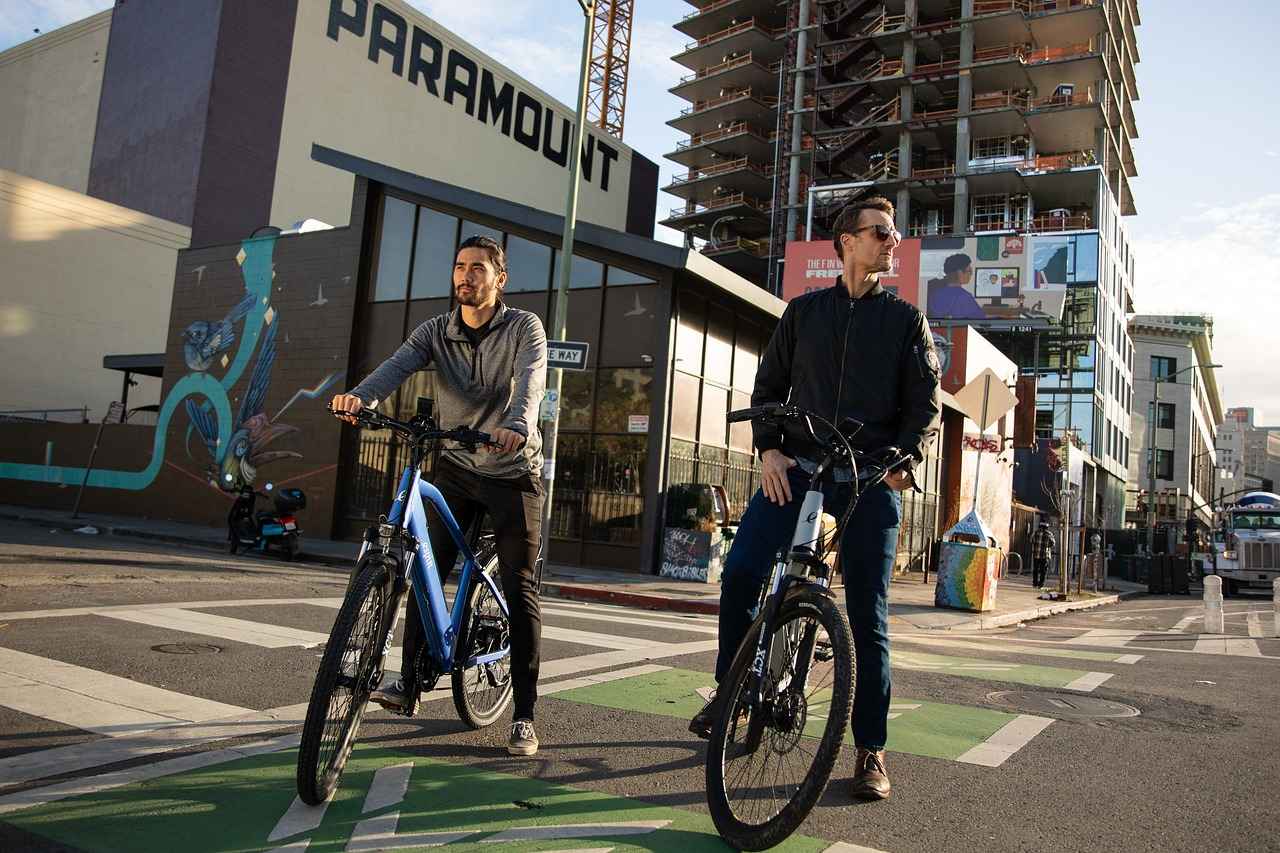
3. Suspension Types: Hardtail vs. Full Suspension
When it comes to electric mountain bikes (eMTBs), choosing the right suspension type is crucial for maximizing your riding experience. The decision between hardtail and full suspension can significantly affect your comfort, control, and performance on various terrains. Below, we explore the advantages and disadvantages of each suspension type to help you make an informed choice.
| Suspension Type | Pros | Cons |
|---|---|---|
| Hardtail |
|
|
| Full Suspension |
|
|
Choosing the Right Suspension for Your Riding Style
Your choice between hardtail and full suspension should depend on your riding style and the types of trails you plan to tackle. If you primarily ride on smooth trails and enjoy climbing, a hardtail may suit you best. However, if you seek adventure on rugged terrains with challenging descents, a full suspension bike will offer the comfort and control you need.
Ultimately, understanding the differences between these suspension types will empower you to select the bike that aligns with your personal preferences and riding goals. Whether you choose a hardtail or a full suspension, both options provide unique benefits that enhance your mountain biking experience.
3.1 Hardtail Suspension Bikes
Hardtail bikes are a popular choice among mountain biking enthusiasts, primarily featuring front suspension only. This design provides a lightweight option that is particularly effective for smoother trails. Unlike full suspension bikes, hardtails have a simpler structure, which translates to less weight and lower maintenance costs.
Advantages of Hardtail Bikes
- Weight Efficiency: With no rear suspension components, hardtail bikes are generally lighter, making them easier to handle and maneuver.
- Cost-Effective: Hardtails tend to be more affordable than their full-suspension counterparts, making them an excellent choice for beginners or casual riders.
- Pedaling Efficiency: The rigid rear end allows for better power transfer from the pedals, which is particularly beneficial on climbs and flat terrains.
- Durability: With fewer moving parts, hardtail bikes are often more durable and require less frequent repairs.
Ideal Scenarios for Hardtail Bikes
Hardtail bikes excel in various scenarios, such as:
- Smooth Trails: They perform exceptionally well on well-maintained paths and gentle hills, where their lightweight design can be fully utilized.
- Racing: Many cross-country races favor hardtails due to their efficiency and speed on less technical courses.
- Beginner Riders: New cyclists benefit from the straightforward handling of hardtails, making it easier to learn the fundamentals of mountain biking.
In conclusion, hardtail suspension bikes offer a unique combination of lightweight design, cost-effectiveness, and efficiency that makes them ideal for a variety of riding scenarios. Whether you are a beginner looking to get into mountain biking or an experienced rider seeking a reliable option for smoother trails, hardtails present a compelling choice.
3.2 Full Suspension Bikes
Full suspension bikes have become increasingly popular among mountain bikers, especially those tackling challenging and technical trails. These bikes are designed to provide superior comfort and enhanced control, making them a top choice for riders who frequently encounter rough terrains.
One of the primary advantages of full suspension bikes is their ability to absorb shocks from both the front and rear. This feature allows riders to navigate obstacles such as rocks, roots, and steep descents with greater ease. By minimizing the impact of these irregularities, full suspension bikes reduce fatigue, enabling riders to maintain their performance over longer distances.
Additionally, the improved traction offered by full suspension systems is crucial for technical trails. The rear suspension keeps the wheel in contact with the ground, providing better grip and stability during climbs and descents. This is particularly beneficial when traversing uneven surfaces, as it allows for more precise handling and control.
Another significant benefit of full suspension bikes is their versatility. They excel not only on technical trails but also on smoother paths, making them suitable for a variety of riding styles. Riders can shift seamlessly between different terrains without sacrificing comfort or performance.
Moreover, full suspension bikes often come equipped with adjustable settings, allowing riders to customize their suspension based on personal preferences and trail conditions. This adaptability ensures that each ride can be tailored to the rider’s specific needs, enhancing the overall experience.
| Advantages of Full Suspension Bikes | Considerations |
|---|---|
| Enhanced Comfort | Generally heavier than hardtail bikes |
| Improved Control | More complex maintenance required |
| Better Traction | Higher price point |
In conclusion, full suspension bikes are a fantastic investment for serious mountain bikers looking to enhance their riding experience. With their ability to absorb shocks, provide better traction, and adapt to various terrains, they are undoubtedly the preferred choice for those who love to explore technical trails.
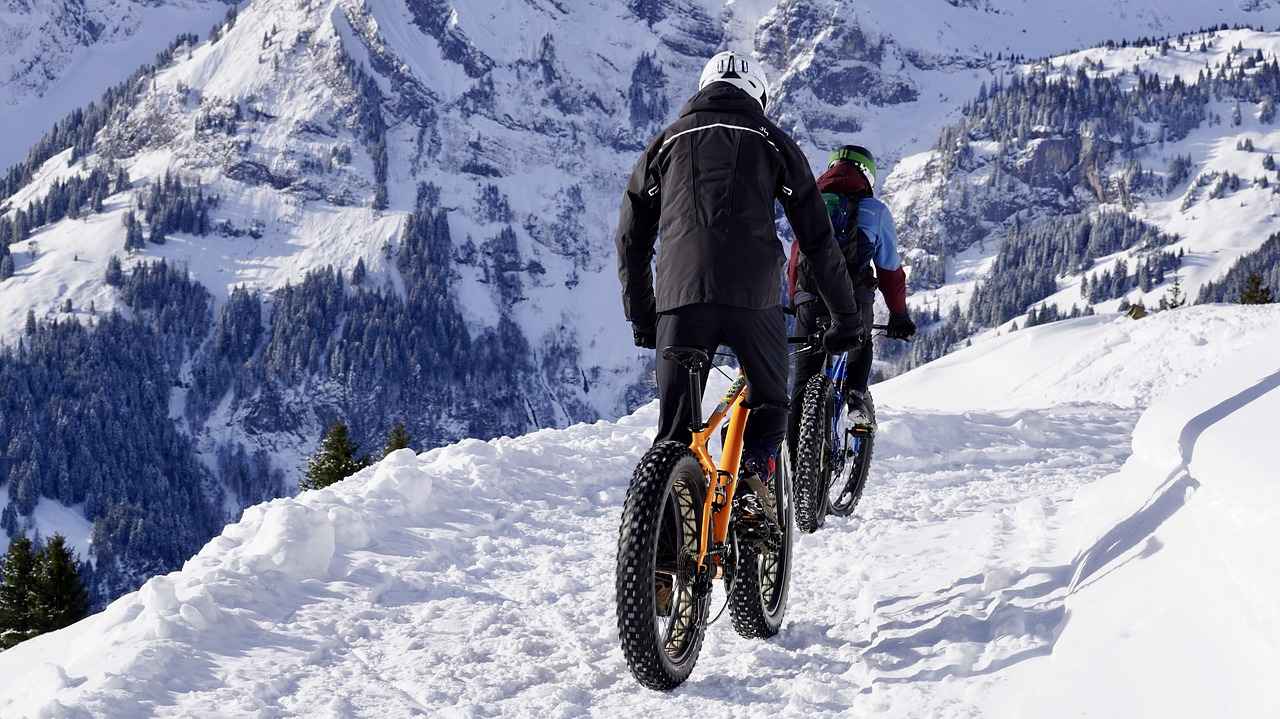
4. Top Brands in the Electric Mountain Bike Market
The electric mountain bike (eMTB) market is thriving, with several brands leading the charge in terms of quality, innovation, and performance. Understanding what sets these brands apart can help you make an informed decision when choosing your next eMTB.
1. Trek
Trek is a household name in the cycling world, known for its commitment to innovation and quality. Their eMTBs, such as the Powerfly series, incorporate advanced technology like Bosch motors and integrated batteries, providing a seamless riding experience. Trek emphasizes durability and performance, making their bikes suitable for both casual riders and serious enthusiasts.
2. Specialized
Specialized is renowned for its cutting-edge technology and design in electric mountain bikes. Their Turbo Levo series is a prime example, featuring customizable power settings and a lightweight frame. Specialized focuses on enhancing rider experience through ergonomic designs and superior suspension systems, making their bikes a favorite among outdoor enthusiasts.
3. Giant
Giant is another leading brand, offering a range of eMTBs that cater to different riding styles. Their Trance E+ models are celebrated for their balance and handling. Giant bikes often feature SyncDrive motors that deliver powerful assistance, allowing riders to conquer steep terrains effortlessly.
4. Cannondale
Cannondale is known for its innovative approach to bike design. Their eMTBs, like the Moterra, are equipped with SmartSense technology for enhanced safety and performance. Cannondale focuses on lightweight materials and agile handling, making their bikes ideal for technical trails.
5. Bulls
Bulls is a brand that has gained popularity for its high-performance eMTBs. Their eStream series features powerful motors and robust frames designed for rugged terrains. Bulls bikes are known for their reliability and performance, making them a great choice for serious mountain bikers.
In conclusion, when exploring the eMTB market, consider what each brand offers in terms of technology, performance, and design. Whether you prioritize innovation, comfort, or durability, there is a brand that meets your needs.
4.1 Trek
Trek is a leading name in the cycling industry, particularly known for its high-quality electric mountain bikes (eMTBs). With a commitment to innovation and performance, Trek has successfully blended advanced technology with user-friendly designs, making their eMTBs a popular choice among both beginners and seasoned riders.
One of the standout features of Trek’s eMTBs is their Powerfly series. These bikes are designed to tackle a variety of terrains, from steep climbs to rugged trails, ensuring that riders can enjoy a versatile and thrilling experience. The Powerfly FS model, for instance, boasts full suspension, providing enhanced comfort and control on challenging paths. Riders can expect a smooth ride even on the toughest trails, thanks to the bike’s superior shock absorption capabilities.
Another impressive aspect of Trek’s eMTBs is their battery technology. Utilizing Bosch Performance Line motors, these bikes offer excellent torque and range, enabling riders to cover longer distances without the worry of battery depletion. With a variety of battery capacities available, users can choose the model that best fits their riding style and needs.
In addition to performance, Trek places a strong emphasis on comfort. Their eMTBs feature ergonomic designs that enhance the riding experience, ensuring that cyclists can enjoy long rides without discomfort. The adjustable components allow for a tailored fit, making each ride enjoyable regardless of the rider’s size or skill level.
Moreover, the brand is committed to sustainability, focusing on eco-friendly practices in their manufacturing processes. This dedication to the environment resonates with many outdoor enthusiasts who are looking for ways to minimize their ecological footprint while enjoying nature.
For those looking to explore the great outdoors with confidence, Trek’s electric mountain bikes represent a perfect blend of performance, comfort, and sustainability. With a wide range of models and features, there is a Trek eMTB to suit every adventurer’s needs.
4.2 Specialized
Specialized has established itself as a leader in the electric mountain bike (eMTB) industry, known for its commitment to innovation and performance. With a focus on providing outdoor enthusiasts with cutting-edge technology, Specialized has developed a range of eMTBs that cater to various riding styles and preferences.
One of the standout features of Specialized eMTBs is their Turbo technology, which enhances the riding experience by delivering seamless power assistance. This technology allows riders to tackle steep inclines and rough terrains with ease, making it an excellent choice for both seasoned riders and newcomers alike.
- Turbo Levo: This model is designed for those who crave adventure. It offers a powerful motor and a long-lasting battery, allowing for extended rides without the worry of running out of power.
- Turbo Kenevo: Built for downhill enthusiasts, the Kenevo features advanced suspension systems that absorb shocks effectively, providing a smooth ride on the most challenging trails.
- Turbo Vado: A versatile option, the Vado is perfect for both urban commuting and off-road adventures, making it a favorite among riders looking for a multi-functional bike.
In addition to their innovative technology, Specialized bikes are crafted with durability and comfort in mind. The lightweight frames and ergonomic designs ensure that riders can enjoy long hours of biking without discomfort.
Furthermore, Specialized places a strong emphasis on sustainability. The company is continuously exploring eco-friendly materials and manufacturing processes to reduce its environmental impact, aligning with the growing demand for sustainable products in the biking community.
In conclusion, Specialized stands out as a top choice for electric mountain biking enthusiasts. With their focus on innovation, performance, and sustainability, Specialized eMTBs offer a thrilling and responsible way to explore the great outdoors.
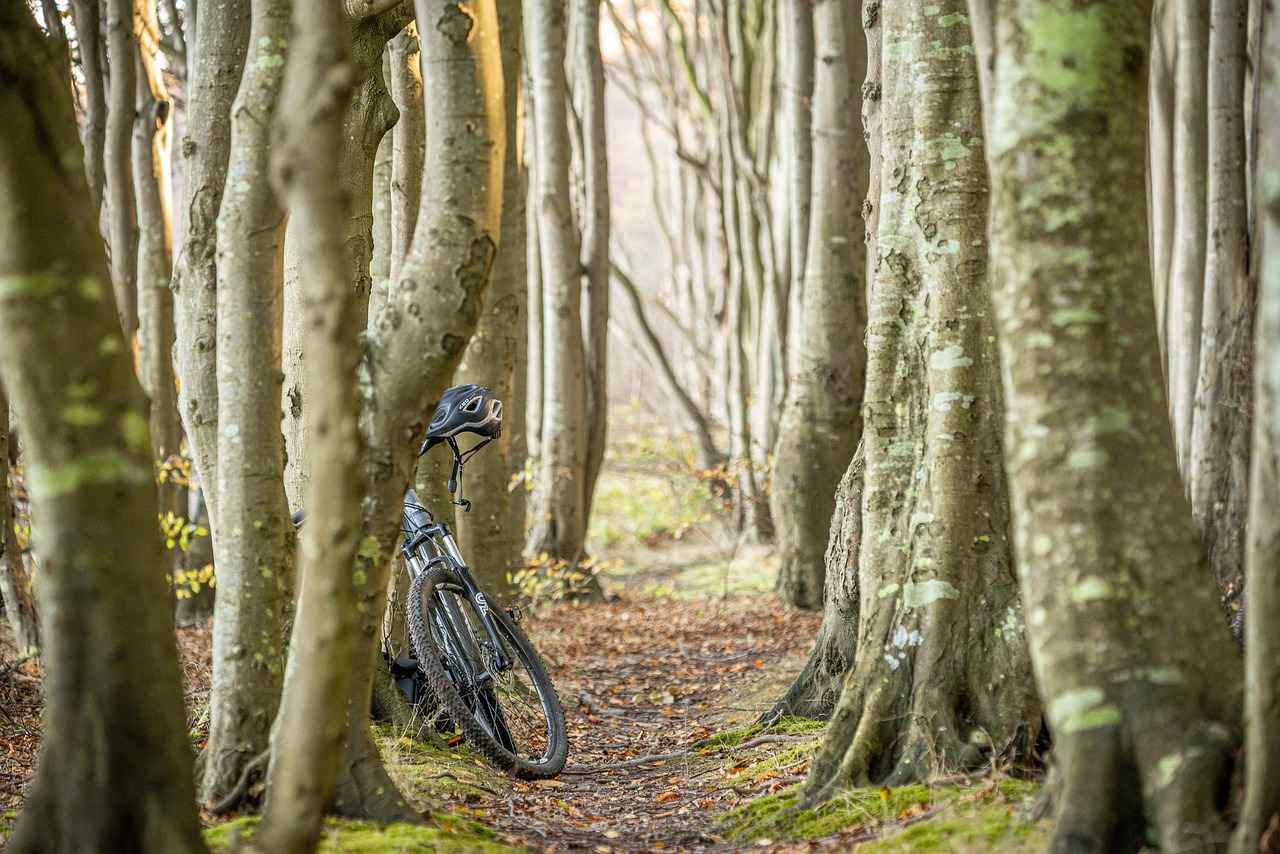
5. Pricing: What to Expect
The price range for electric mountain bikes can vary significantly based on a variety of factors, including the brand, features, and technology incorporated into the bike. Understanding these factors is essential for potential buyers to make informed decisions and invest wisely in an eMTB that suits their needs.
Typically, prices for electric mountain bikes can start as low as $1,000 for entry-level models and can soar to over $10,000 for high-end options. This wide range reflects differences in quality, durability, and performance capabilities.
- Brand Reputation: Established brands often command higher prices due to their reputation for quality and reliability. Brands like Trek and Specialized are known for their innovative designs and superior technology.
- Components: The quality of components, including the motor, battery, and suspension system, greatly affects pricing. Higher-end models usually feature more advanced technology, resulting in better performance and longer lifespans.
- Material: The frame material can also impact the price. Bikes made from lightweight materials such as carbon fiber tend to be more expensive compared to those made from aluminum or steel.
- Technology: Advanced features like integrated GPS, smart connectivity, and enhanced battery management systems can increase the cost but also provide added value and convenience.
When considering your budget, it’s crucial to balance cost with performance and durability. For those on a tighter budget, there are still quality eMTBs available that offer excellent performance without breaking the bank. These budget-friendly options may lack some high-end features but can still provide a thrilling riding experience.
On the other hand, investing in a high-end model often means better performance, advanced features, and a longer lifespan, making it a worthwhile consideration for serious riders. Ultimately, understanding the factors influencing pricing will help you make a more informed decision when purchasing your electric mountain bike.
5.1 Budget-Friendly Options
For outdoor enthusiasts seeking affordable electric mountain bikes (eMTBs), the market offers several options that deliver impressive performance without breaking the bank. It’s essential to find the right balance between cost and quality, ensuring that your investment yields a thrilling riding experience.
- 1. Ancheer Power Plus Electric Mountain Bike
- Features a 250W motor, providing adequate power for various terrains.
- Equipped with a removable 36V lithium-ion battery, offering a range of up to 50 miles.
- Lightweight aluminum frame enhances maneuverability.
- 2. Merax 26″ Mountain Bike
- Affordable yet reliable, featuring a durable steel frame.
- Powerful 500W motor that supports steep climbs and rough trails.
- Adjustable seat height for a customized riding experience.
- 3. ECOTRIC 26″ Electric Mountain Bike
- Offers a 36V battery with a range of up to 20 miles on a single charge.
- Includes front suspension for improved shock absorption on bumpy trails.
- Stylish design with a variety of color options.
When considering budget-friendly eMTBs, it is crucial to evaluate performance, battery life, and build quality. Many of these options provide essential features that ensure a satisfying ride, making them excellent choices for both beginners and seasoned riders. Investing in a quality eMTB doesn’t have to be expensive, and with careful research, you can find a bike that meets your needs without compromising on performance.
In conclusion, the world of electric mountain biking is accessible to everyone, regardless of budget. By exploring these affordable options, you can embark on your outdoor adventures with confidence and excitement.
5.2 High-End Models
High-end electric mountain bikes are designed for serious riders who demand the best in performance, durability, and advanced technology. These models come equipped with features that elevate the riding experience, making them a worthwhile investment for those who take their outdoor adventures seriously.
One of the most significant advantages of high-end eMTBs is their superior motor technology. Many premium models utilize powerful motors that provide exceptional torque and acceleration, allowing riders to conquer steep hills and challenging terrains with ease. This enhanced motor performance means less effort is required from the rider, enabling longer rides and more exploration.
Battery life is another critical feature that differentiates high-end models from their budget counterparts. Premium eMTBs often come with larger capacity batteries, offering extended ranges that can exceed 50 miles on a single charge. This is particularly beneficial for riders who enjoy long-distance trails or multi-day adventures, as it reduces the need for frequent recharging and allows for uninterrupted riding.
Additionally, high-end electric mountain bikes typically feature advanced suspension systems that enhance comfort and control. Full suspension setups, which absorb shocks from both the front and rear, provide a smoother ride over rugged terrain, making them ideal for technical trails. These sophisticated suspension systems are often adjustable, allowing riders to customize their setup based on personal preferences and trail conditions.
Furthermore, many premium eMTBs come with high-quality components, such as hydraulic disc brakes for superior stopping power and precision shifting systems that ensure smooth gear changes. The use of lightweight materials, like carbon fiber and aluminum alloys, contributes to an overall lighter bike, improving handling and maneuverability.
In conclusion, investing in a high-end electric mountain bike not only enhances performance but also enriches the overall riding experience. With advanced features, superior durability, and the ability to tackle challenging terrains, these models are perfect for serious riders looking to elevate their outdoor adventures.
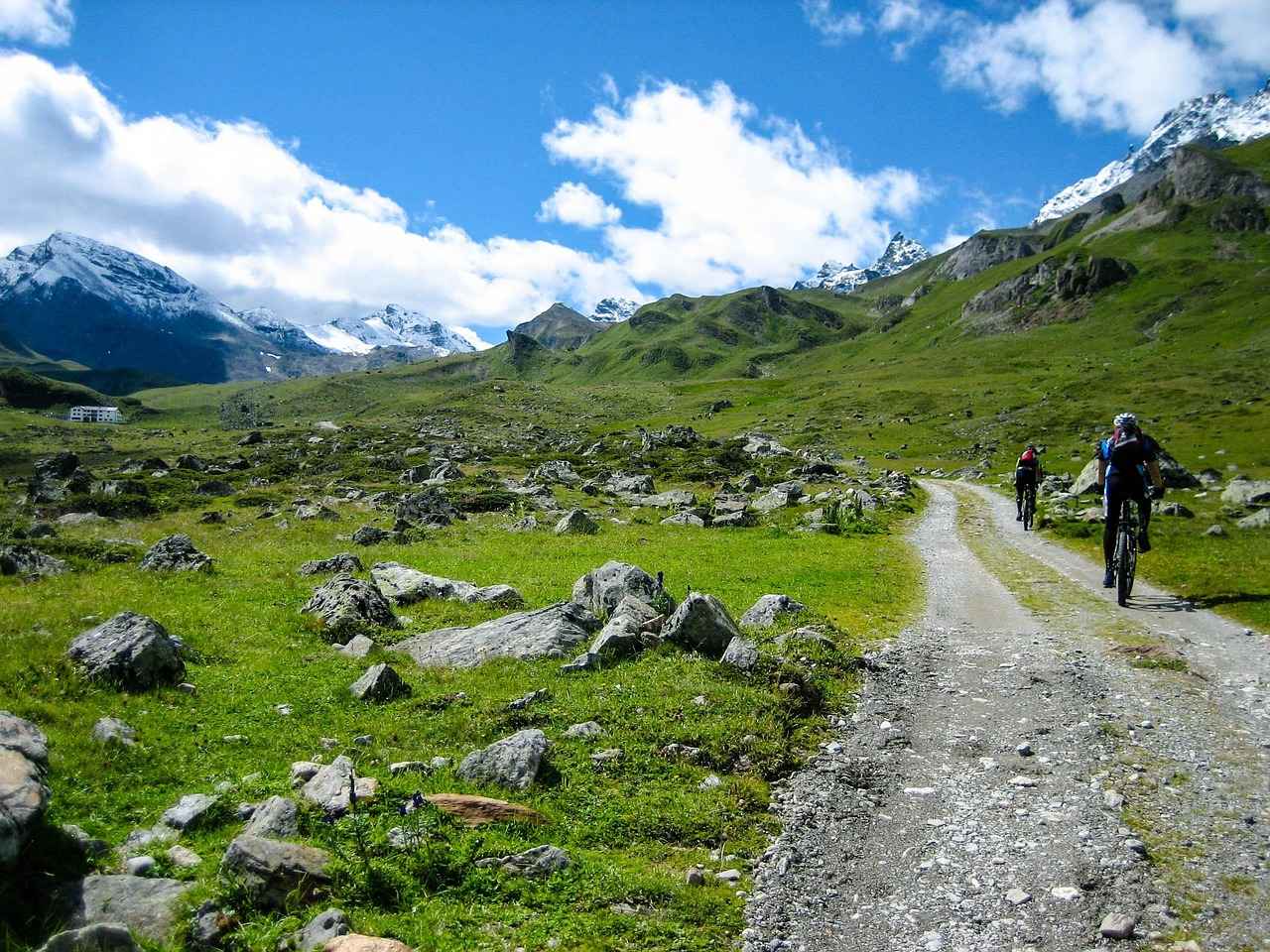
6. Maintenance Tips for Electric Mountain Bikes
Proper maintenance is essential for keeping your electric mountain bike in top shape. Regular upkeep not only enhances performance but also extends the lifespan of your bike. Here are some key maintenance practices to ensure longevity and optimal performance.
- Battery Care: The battery is the heart of your electric mountain bike. To maximize its lifespan, charge it regularly but avoid overcharging. Store it in a cool, dry place and ensure it is at least partially charged during long periods of inactivity.
- Regular Inspections: Conduct routine inspections of your bike. Check the brakes, tires, and gears for wear and tear. Look for any loose components or signs of damage. Early detection can prevent costly repairs later.
- Cleaning: Keep your bike clean to prevent dirt and grime from affecting its performance. Use a soft brush and mild soap to clean the frame, wheels, and components. Avoid using high-pressure water as it can damage electrical components.
- Lubrication: Regularly lubricate the chain and moving parts to ensure smooth operation. Use a quality bike lubricant and wipe off any excess to prevent dirt accumulation.
- Tire Maintenance: Check tire pressure before every ride. Properly inflated tires enhance traction and control. Inspect the tread for wear and replace tires as needed to ensure safety on rugged terrains.
- Software Updates: Many electric mountain bikes come with software that can be updated. Regularly check for updates to ensure your bike’s system operates efficiently and benefits from the latest features.
By following these maintenance tips, you can enjoy a reliable and high-performing electric mountain bike for many adventures to come. Regular care will not only improve your riding experience but also save you money on repairs in the long run.
6.1 Battery Care
Battery Care is essential for anyone who owns an electric mountain bike (eMTB). A well-maintained battery not only enhances performance but also extends the lifespan of your bike. In this section, we will explore the best practices for charging, storing, and maintaining your battery to ensure optimal performance.
| Battery Care Tips | Description |
|---|---|
| 1. Charge Regularly | Keep your battery charged between 20% and 80% for the best results. Avoid letting it discharge completely. |
| 2. Use the Right Charger | Always use the manufacturer’s recommended charger to prevent damage and ensure efficient charging. |
| 3. Store Properly | Store the battery in a cool, dry place. Avoid extreme temperatures to prevent degradation. |
| 4. Clean Contacts | Regularly clean the battery contacts with a soft, dry cloth to ensure a good connection. |
| 5. Monitor Health | Keep an eye on battery performance and capacity. If you notice significant drops, it may be time for a replacement. |
Following these best practices will help you maximize your battery’s performance and longevity. Remember that a healthy battery is crucial for enjoying your rides without interruptions. Regular maintenance will not only save you money in the long run but also enhance your overall biking experience.
In conclusion, taking care of your eMTB battery is a simple yet effective way to ensure that you can enjoy your outdoor adventures to the fullest. By implementing these tips, you can keep your bike running smoothly and efficiently.
6.2 Regular Inspections
Regular inspections are a crucial aspect of maintaining your electric mountain bike (eMTB). By conducting consistent checks, you can identify potential issues before they escalate into major problems, ensuring a smoother and safer ride. Here’s a detailed guide on what to inspect regularly to keep your bike running at its best.
- Brakes: Check the brake pads for wear and ensure that they are functioning properly. Squeaking or grinding sounds can indicate that it’s time for a replacement.
- Tires: Inspect the tire pressure and tread. Proper inflation is essential for traction and control, while adequate tread helps prevent slips on rugged terrains.
- Battery: Regularly examine the battery for any signs of damage or corrosion. Ensure that connections are secure and that the battery is charged according to manufacturer instructions.
- Chain and Gears: Keep the chain clean and lubricated to ensure smooth shifting. Check for any stiffness or rust, and inspect the gears for proper alignment.
- Suspension: Test the suspension system for responsiveness. Look for leaks in the shock absorbers and ensure that they are functioning as intended.
In addition to these checks, it’s beneficial to keep a maintenance log. This log can help you track any issues and the frequency of inspections, making it easier to stay on top of your bike’s condition.
Conclusion: By performing regular inspections, you not only extend the life of your eMTB but also enhance your riding experience. Remember, a well-maintained bike is key to enjoying the great outdoors without the worry of potential breakdowns.

7. Riding Safety Tips
Riding safety is paramount when it comes to electric mountain biking. As the popularity of eMTBs continues to grow, it is essential for riders to prioritize their safety and the safety of others. Below are some essential safety tips to ensure a safe and enjoyable riding experience on various terrains.
- Wear Protective Gear: Always wear a helmet, gloves, and padded clothing. Protective gear can significantly reduce the risk of injuries in case of falls or accidents.
- Know Your Bike: Familiarize yourself with your electric mountain bike’s features, including the motor, battery, and brakes. Understanding how your bike works can enhance your control and safety.
- Stay Visible: Use reflective gear and lights, especially if riding in low-light conditions. This helps increase your visibility to other trail users and vehicles.
- Follow Trail Etiquette: Respect other trail users by yielding to pedestrians and cyclists. Always signal your intentions when passing others to avoid accidents.
- Stay Within Your Limits: Know your skill level and choose trails that match your experience. Pushing beyond your limits can lead to dangerous situations.
- Check Your Equipment: Before heading out, inspect your bike for any mechanical issues. Ensure that brakes, tires, and battery are in good condition to prevent malfunctions during your ride.
- Ride at a Safe Speed: Maintain a speed that allows you to react to obstacles and changes in terrain. Speeding can lead to loss of control and increase the risk of accidents.
- Stay Hydrated: Bring water and take breaks to avoid dehydration, especially on long rides. Staying hydrated helps maintain focus and physical performance.
By following these safety tips, riders can enjoy the thrill of electric mountain biking while minimizing risks. Remember, a safe ride is a fun ride!
7.1 Wearing Protective Gear
Wearing appropriate protective gear is essential for ensuring safety while riding electric mountain bikes. Riders should prioritize their safety by investing in the right equipment to minimize the risk of injuries during their adventures.
When it comes to protective gear, there are several key items that every rider should consider:
- Helmet: A high-quality helmet is non-negotiable. It protects your head from potential impacts and can significantly reduce the severity of head injuries.
- Gloves: Wearing gloves enhances grip and protects your hands from abrasions and blisters, especially on long rides.
- Knee and Elbow Pads: These pads provide extra cushioning for your joints, reducing the risk of fractures and scrapes during falls.
- Protective Eyewear: Sunglasses or goggles shield your eyes from debris, UV rays, and wind, improving visibility and comfort.
- Body Armor: For more aggressive riding, consider investing in body armor that covers your torso and back, offering additional protection against impacts.
Furthermore, it’s important to ensure that all gear fits properly and is comfortable to wear. Ill-fitting gear can hinder your performance and may even pose a safety risk if it shifts during a ride.
In addition to wearing protective gear, riders should also familiarize themselves with safe riding practices. This includes understanding trail etiquette and being aware of your surroundings to anticipate potential hazards.
In conclusion, prioritizing safety through appropriate protective gear not only enhances your riding experience but also significantly reduces the risk of injuries. Always remember, a safe ride is a fun ride!
7.2 Understanding Trail Etiquette
Understanding Trail Etiquette is essential for ensuring a positive outdoor experience for everyone. As outdoor enthusiasts, it is our responsibility to respect nature and fellow trail users. This guide outlines the fundamental rules and guidelines to follow while riding on shared trails.
- Stay on Designated Trails: Always ride on marked paths to prevent damaging the surrounding ecosystem. Straying off-trail can lead to soil erosion and harm to native plants.
- Yield to Others: When encountering hikers or horseback riders, it is courteous to yield. Cyclists should always slow down and give way to those on foot or horseback.
- Control Your Speed: Maintain a safe speed, especially in crowded areas. Sudden stops or quick maneuvers can lead to accidents and injuries.
- Be Aware of Your Surroundings: Keep an eye out for other trail users and wildlife. Being alert helps prevent collisions and ensures a safe environment for all.
- Leave No Trace: Carry out what you bring in. Dispose of waste properly and avoid littering to preserve the natural beauty of the trails.
- Communicate: When approaching others, use your voice or a bell to alert them of your presence. This simple act can prevent surprises and promote safety.
- Respect Trail Closures: If a trail is closed, do not attempt to ride on it. Closures are often in place for safety or environmental protection.
By adhering to these trail etiquette guidelines, we can all enjoy the beauty of nature while ensuring that future generations can do the same. Remember, being a responsible trail user not only enhances your experience but also fosters a spirit of community among outdoor enthusiasts.
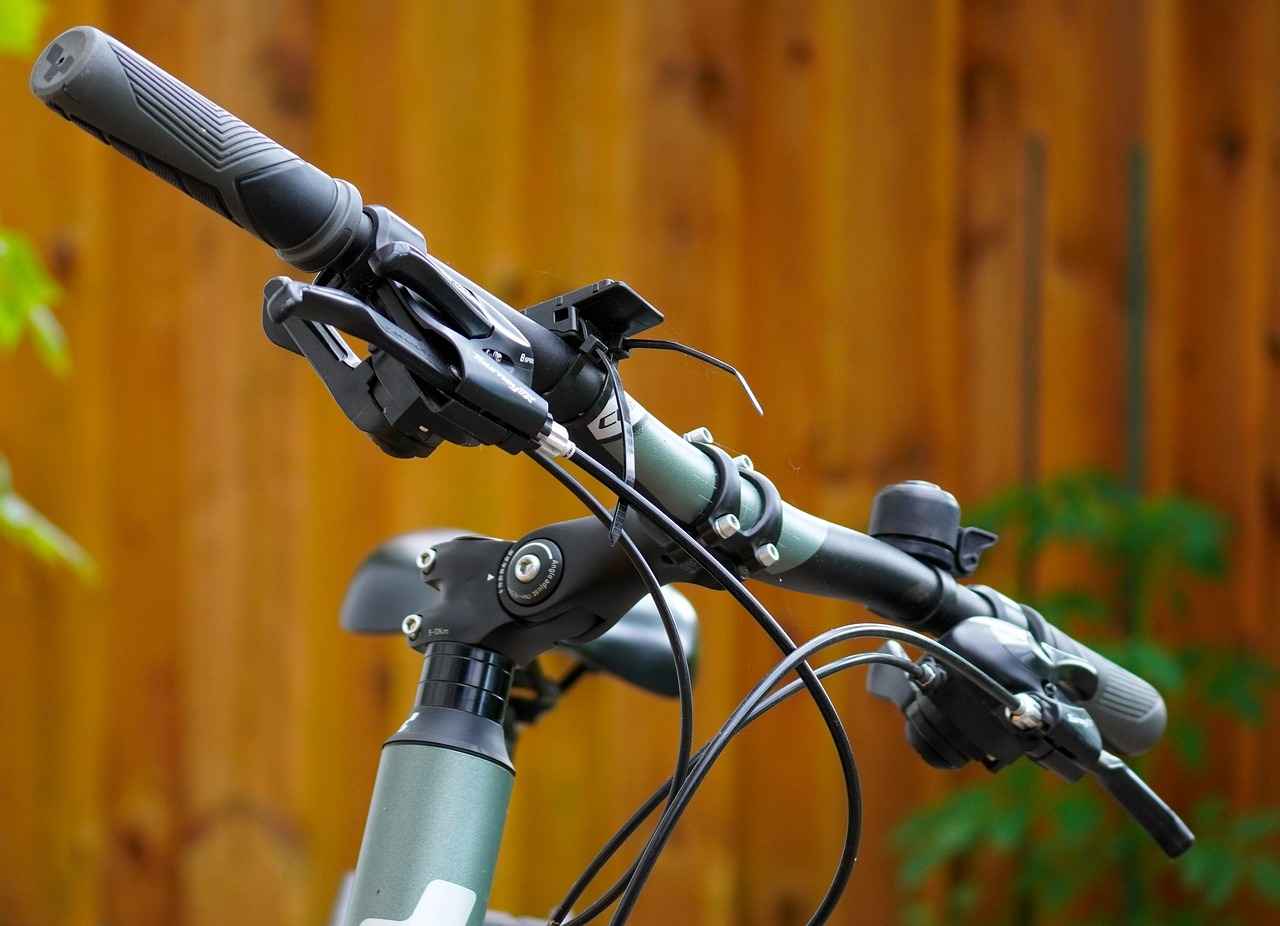
8. Popular Trails for Electric Mountain Biking
Finding the right trails enhances the eMTB experience. For electric mountain biking enthusiasts, the thrill of exploring diverse terrains is unparalleled. Whether you are a seasoned rider or a beginner, choosing the right trail can significantly impact your adventure. Below, we delve into some of the most popular trails that cater specifically to eMTB riders, ensuring a memorable experience.
- Moab, Utah: Known for its stunning red rock landscapes, Moab offers a variety of trails suitable for all skill levels. The Porcupine Rim Trail is particularly famous for its breathtaking views and challenging terrain.
- Bentonville, Arkansas: This emerging biking hotspot features the Coler Mountain Bike Preserve, which boasts a mix of flowy trails and technical sections, perfect for eMTB enthusiasts.
- Whistler, British Columbia: Home to some of the best mountain biking trails in the world, Whistler offers an array of trails like the Lost Lake Loop, ideal for electric mountain bikes.
- Alps, France: The French Alps provide stunning views and exhilarating trails. The Les Gets area is particularly popular for its well-marked eMTB routes.
- Lake District, England: The picturesque landscapes of the Lake District offer a range of trails, such as the Grizedale Forest, which features diverse terrains for eMTB riders.
- Queenstown, New Zealand: Known for its adventure sports, Queenstown has trails like the Queenstown Trail, which provides stunning views of the surrounding mountains and lakes.
When selecting a trail for your eMTB adventure, consider the following:
- Skill Level: Choose trails that match your riding experience to ensure safety and enjoyment.
- Trail Conditions: Research the current conditions of the trail, as weather can significantly affect rideability.
- Distance and Duration: Plan your ride based on how long you want to be out, factoring in battery life and your physical stamina.
In conclusion, finding the right trails is crucial for enhancing your electric mountain biking experience. From the iconic landscapes of North America to breathtaking international destinations, there are countless trails waiting to be explored. Always prioritize safety and preparation to ensure a thrilling and enjoyable ride.
8.1 Best Trails in North America
North America is a haven for electric mountain biking enthusiasts, offering an array of trails that cater to all skill levels. From breathtaking scenery to challenging terrains, these trails provide the perfect backdrop for adventure seekers. Here, we delve into some of the best-rated trails that are ideal for eMTB rides.
- Moab, Utah: Known for its stunning red rock formations, Moab offers trails like the Porcupine Rim and Magnificent 7. These trails provide a mix of technical challenges and spectacular views, making them a must-ride for eMTB enthusiasts.
- Whistler, British Columbia: Famous for its mountain biking scene, Whistler features the Whistler Bike Park with trails suitable for all levels. The park’s extensive network ensures that riders can enjoy both thrilling descents and scenic vistas.
- Park City, Utah: With over 450 miles of trails, Park City is a top destination for electric mountain biking. The Wasatch Crest Trail is particularly popular, offering panoramic views of the surrounding mountains and valleys.
- Lake Tahoe, California/Nevada: The trails around Lake Tahoe, such as the Flume Trail, are renowned for their breathtaking lake views and diverse terrains. Riders can enjoy a mix of singletrack and fire roads, making it perfect for eMTBs.
- Kingdom Trails, Vermont: This trail network is known for its well-maintained paths and beautiful scenery. The Kingdom Trails offer a variety of terrains, from easy rides to more challenging routes, making it suitable for all riders.
These trails not only provide exhilarating rides but also showcase the stunning natural beauty of North America. Whether you are looking for a leisurely ride or an adrenaline-pumping adventure, these top-rated trails promise an unforgettable experience for electric mountain biking enthusiasts.
8.2 International Destinations for eMTB Adventures
International Destinations for eMTB Adventures
For those looking to travel, several international destinations offer fantastic trails for electric mountain biking. Whether you are an experienced rider or a beginner seeking adventure, these locations provide breathtaking scenery and thrilling trails that cater to all skill levels.
- 1. Whistler, Canada
Known for its stunning landscapes, Whistler offers an extensive network of trails specifically designed for eMTBs. The Whistler Mountain Bike Park features over 1,500 meters of vertical drop and trails that range from easy to expert, making it a perfect destination for all riders.
- 2. The Alps, Europe
The Alps are a dream for mountain bikers, with picturesque views and challenging terrains. Countries like Switzerland and France boast numerous eMTB-friendly trails that allow riders to explore the breathtaking alpine scenery while enjoying the electric boost.
- 3. Rotorua, New Zealand
Famous for its geothermal activity, Rotorua also offers some of the best eMTB trails in the Southern Hemisphere. The Redwoods Forest features a range of trails that are well-maintained and suitable for various skill levels, ensuring a fantastic riding experience.
- 4. Costa Rica
For those seeking a tropical adventure, Costa Rica provides lush rainforests and rugged mountains. Trails like the La Fortuna loop offer stunning views of waterfalls and wildlife, making it a unique destination for eMTB enthusiasts.
- 5. Moab, Utah, USA
Moab is renowned for its dramatic landscapes and challenging trails. The Slickrock Trail is iconic for mountain bikers, and with an eMTB, riders can tackle the rocky terrain with ease while enjoying the stunning desert vistas.
These destinations not only provide thrilling trails but also allow riders to immerse themselves in diverse cultures and stunning natural environments. Prepare for your next adventure by considering these incredible locations that cater to electric mountain biking enthusiasts!
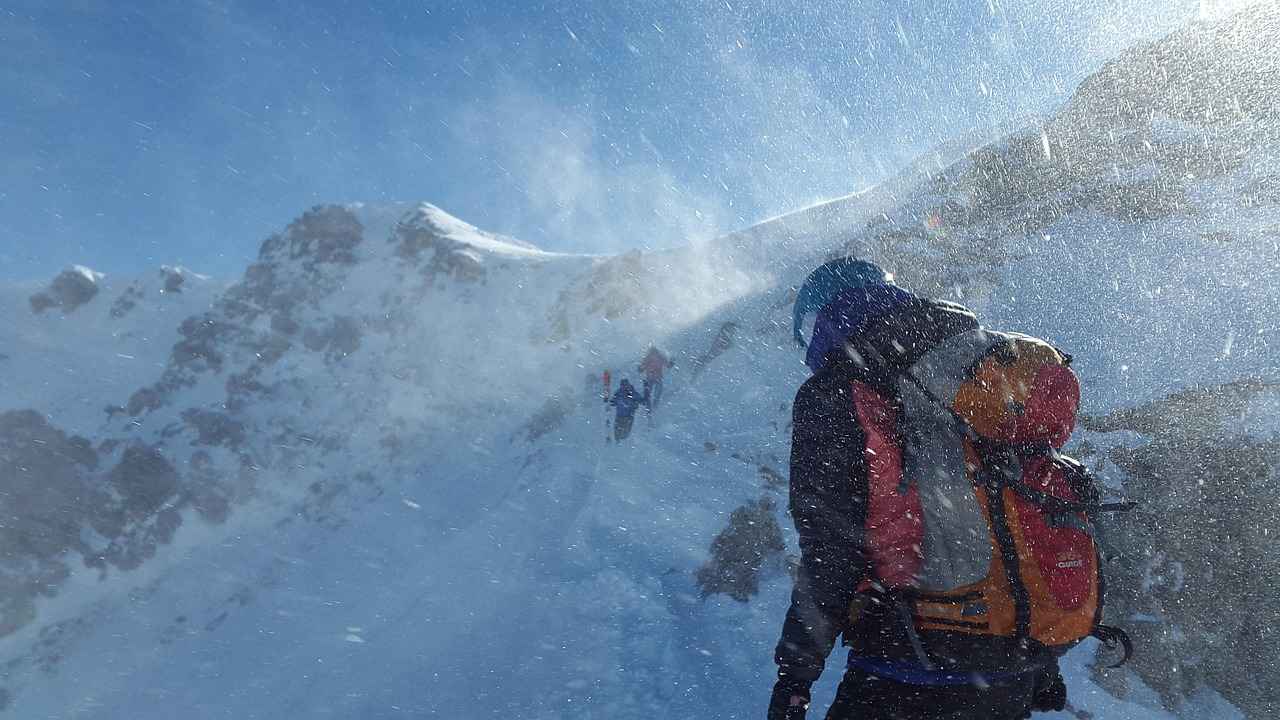
9. The Future of Electric Mountain Biking
The Future of Electric Mountain Biking is an exciting topic as the industry continues to evolve at a rapid pace. With advancements in technology and innovative designs, electric mountain bikes (eMTBs) are becoming more accessible and appealing to a broader audience. This section explores the latest trends and innovations that are shaping the future of eMTBs, ensuring that riders can enjoy thrilling adventures on rugged terrains.
As the popularity of eMTBs grows, manufacturers are focusing on enhancing performance and user experience. One significant trend is the development of lighter materials for bike frames, which not only improve maneuverability but also increase overall efficiency. Carbon fiber and advanced alloys are becoming standard, reducing the weight of eMTBs while maintaining durability.
Another critical area of innovation is in battery technology. New lithium-ion batteries are being designed with higher capacities and faster charging times, allowing riders to cover greater distances without worrying about running out of power. Additionally, some companies are exploring the use of solar panels integrated into bike designs, offering a sustainable way to extend battery life during long rides.
Smart technology is also making its way into eMTBs, with features like GPS tracking, ride analytics, and smartphone connectivity becoming more common. These advancements allow riders to monitor their performance, navigate trails, and even receive real-time updates on battery life and motor performance.
Furthermore, the industry is increasingly focusing on sustainability. Brands are adopting eco-friendly practices in manufacturing processes and materials, aiming to minimize their environmental impact. This shift towards sustainability is not only beneficial for the planet but also resonates with environmentally conscious consumers.
As we look ahead, the future of electric mountain biking appears bright. With continuous improvements in technology, design, and sustainability, eMTBs are set to become an integral part of the outdoor adventure landscape. Riders can expect more exciting features, better performance, and a more enjoyable experience on the trails.
9.1 Emerging Technologies
Emerging Technologies in Electric Mountain Biking
As the world of electric mountain biking (eMTB) continues to evolve, new technologies are emerging that promise to revolutionize the way we ride. These innovations not only enhance the performance and safety of eMTBs but also improve the overall user experience. Below, we explore some of the most exciting advancements in this field.
- Smart Connectivity: Modern eMTBs are being equipped with smart technology that allows riders to connect their bikes to mobile apps. This connectivity enables features such as ride tracking, performance analytics, and even navigation assistance. Riders can monitor battery life, adjust settings, and receive maintenance reminders right from their smartphones.
- Advanced Battery Technology: The latest advancements in battery technology, including solid-state batteries, promise to offer greater energy density, faster charging times, and improved longevity. This means riders can enjoy longer rides without the worry of battery depletion.
- Integrated Safety Features: Safety is paramount in mountain biking, and new eMTBs are incorporating features like automatic lights, integrated GPS tracking, and collision avoidance systems. These technologies aim to keep riders safe in challenging terrains and ensure help is always accessible when needed.
- Enhanced Suspension Systems: Innovations in suspension technology, such as adaptive damping, allow for real-time adjustments based on terrain conditions. This means riders can experience a smoother ride, regardless of the trail’s challenges.
- Lightweight Materials: The use of advanced materials, like carbon fiber and aluminum alloys, is becoming more prevalent in eMTB design. These materials not only reduce the overall weight of the bike but also enhance durability and performance on rugged trails.
In conclusion, the future of electric mountain biking is bright, with emerging technologies poised to enhance every aspect of the riding experience. As these innovations continue to develop, riders can look forward to safer, more enjoyable, and more efficient adventures on the trails.
9.2 Sustainability in Electric Mountain Biking
Sustainability in Electric Mountain BikingSustainability is becoming increasingly important in the biking industry, particularly in the realm of electric mountain biking (eMTB). As outdoor enthusiasts seek thrilling adventures, many brands are stepping up to implement eco-friendly practices in the production of electric mountain bikes. This shift not only benefits the environment but also enhances the overall biking experience.
One of the primary ways brands are promoting sustainability is through the use of recycled materials in bike manufacturing. By integrating recycled aluminum and carbon fiber, manufacturers can significantly reduce the carbon footprint associated with new material extraction. Additionally, several companies are exploring the use of biodegradable components, which help minimize waste at the end of a bike’s life cycle.
Another critical aspect of sustainability in the eMTB sector is the focus on energy-efficient production processes. Many brands are investing in renewable energy sources for their manufacturing facilities. This shift towards solar and wind energy not only lowers emissions but also sets a standard for responsible manufacturing practices across the industry.
Brands are also enhancing the longevity of their products by offering repairable designs. This approach encourages riders to maintain and repair their bikes rather than discard them, fostering a culture of sustainability within the biking community. Furthermore, many companies are establishing take-back programs, allowing customers to return old bikes for recycling or refurbishment.
Finally, the rise of electric mountain bikes has led to a greater emphasis on environmentally-conscious riding practices. Educating riders about trail etiquette and responsible riding habits is crucial in preserving natural landscapes. Many brands are actively promoting conservation efforts through partnerships with environmental organizations, reinforcing their commitment to sustainability.
In conclusion, as the electric mountain biking industry continues to evolve, the integration of sustainable practices is becoming a defining characteristic of leading brands. By prioritizing eco-friendly materials, energy-efficient production, and responsible riding, the future of eMTBs looks not only thrilling but also sustainable.
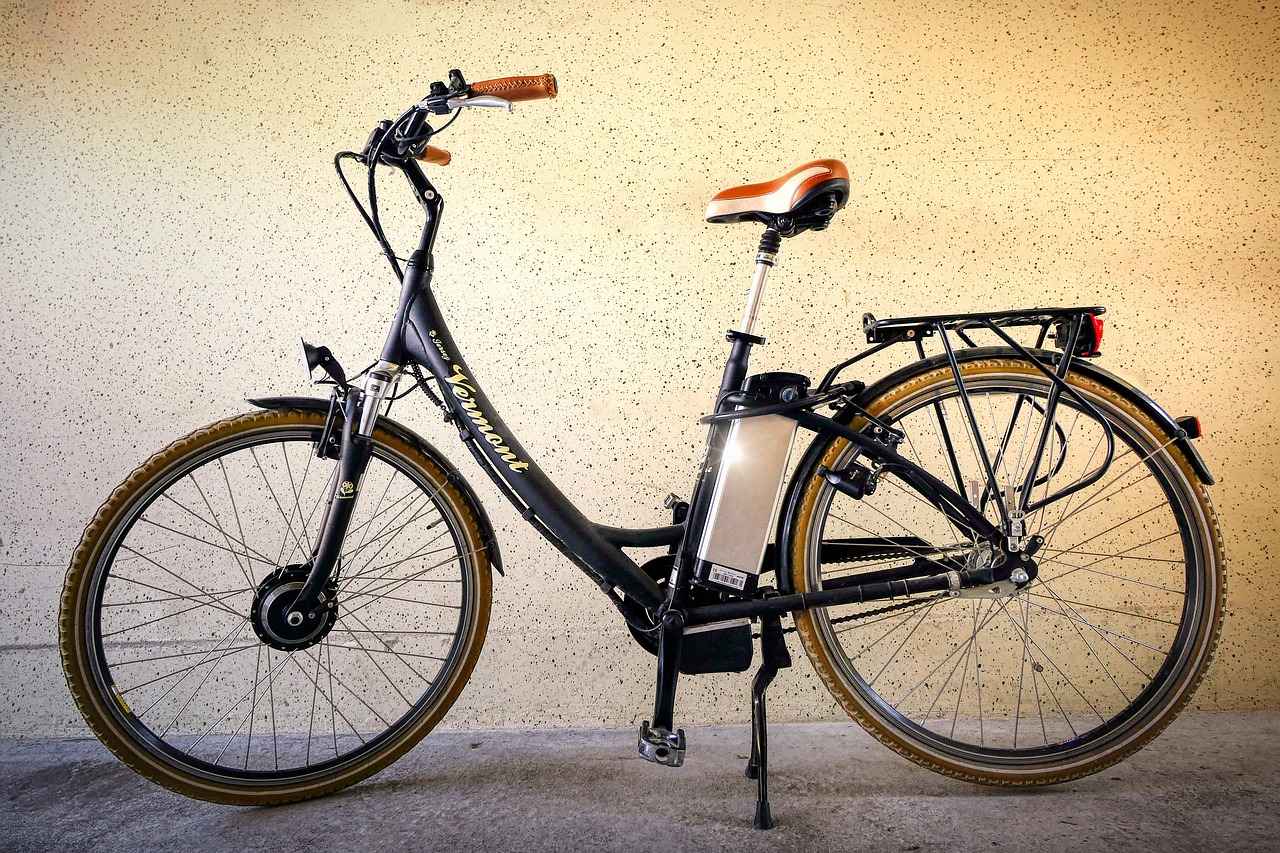
10. Conclusion: Choosing the Right Electric Mountain Bike for You
Selecting the perfect electric mountain bike is crucial for optimizing your riding experience. As you embark on your journey, it’s essential to consider various factors that align with your individual riding style, personal preferences, and budget constraints. This guide summarizes the key points to help you make an informed decision for your outdoor adventures.
Firstly, understand that electric mountain bikes, or eMTBs, are designed to enhance your performance on rugged terrains. They combine traditional mountain biking with electric assistance, making challenging trails more accessible. Consider your riding style—whether you prefer steep climbs, technical descents, or leisurely rides—this will significantly influence your choice.
Next, evaluate key features such as battery life, motor power, and suspension type. These elements directly impact your bike’s performance. For instance, a bike with a powerful motor will provide better acceleration and hill-climbing capabilities, while a robust battery ensures you can cover longer distances without worry.
Additionally, think about the frame material and suspension type. Hardtail bikes are lighter and great for smoother trails, whereas full suspension bikes offer better control and comfort on rough terrains. Choose based on the type of trails you plan to tackle.
Budget is another critical factor. There are options available for various price ranges, from budget-friendly models that don’t compromise on quality to high-end bikes packed with advanced features. Investing in a bike that suits your needs will enhance your riding experience.
In conclusion, by considering your riding style, preferences, and budget, you can select the right electric mountain bike that will elevate your outdoor adventures. Make an informed choice, and enjoy the thrill of exploring new trails!
Frequently Asked Questions
- What is an electric mountain bike (eMTB)?
An electric mountain bike, or eMTB, is a mountain bike equipped with an electric motor that assists with pedaling. This technology allows riders to tackle steep hills and rough terrains with greater ease and less physical strain, making outdoor adventures more accessible and enjoyable.
- How far can I ride on a single charge?
The distance you can ride on a single charge depends on several factors, including the battery capacity, terrain, and your riding style. Most eMTBs offer a range between 20 to 60 miles, but some high-end models can go even further. It’s essential to choose a bike with a battery that suits your adventure needs!
- What should I look for when buying an electric mountain bike?
When buying an eMTB, consider key features like battery life, motor power, suspension type, and frame material. Each of these elements impacts your riding experience. If you’re planning on tackling rugged trails, prioritize a powerful motor and durable suspension system!
- Are electric mountain bikes heavy?
While eMTBs are generally heavier than traditional mountain bikes due to the motor and battery, advances in technology have led to lighter designs. Many riders find that the added weight is manageable, especially considering the boost in performance they provide on challenging terrains.
- Can I ride an eMTB on regular mountain bike trails?
Absolutely! Electric mountain bikes are designed for trail riding, and many trails welcome eMTBs. However, it’s crucial to follow local regulations and trail etiquette to ensure a safe and enjoyable experience for everyone.

